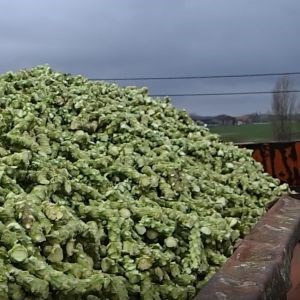When the sprouts have been picked, two thirds of the plant remains on the land. It is thus an organic nutrient for the soil. In the spring it is worked into the soil. But there is even more value to be gained from the non-edible parts of the plant. Dutch and Flemish parties are researching this.
A possibility for the value of the sprouts is to make paper or cardboard. The paper industry explicitly looks at fiber sources other than those from trees. Natural fibre application center Millvision from Raamsdonk is researching it. Plant crop residues are supplemented with fibre crops for high-quality paper.
In addition to sprout cabbage stalks, other plant crops also seem interesting for biobased paper, such as carrot top and foliage, tomato stalk and foliage, and pepper stalk and foliage. In addition, mixtures of agricultural crops and the fiber crops miscanthus, flax and hemp are investigated.
Making paper or cardboard with sprouts is technically possible. According to Sander van Calker of Millvision, it is important to look at what kind of collaborations are possible. 'The laboratory research shows that sprout cabbage stumps have a reasonably good fiber structure. The coloring through the fibers is also pretty natural. That is unique. With other fiber types you often see discoloration. '
The Flemish research and consultancy firm Inagro investigated the mechanical adjustments that are needed. Harvesting machines must be converted to receive the canes. "An extra conveyor belt must be fitted," says Tim Bockstael from Inagro. "And part of the bunker has to be sacrificed for storing the sticks. The conversion of a four-row harvesting machine costs around 25,000 euros, a two-row 30,000 euros. "
